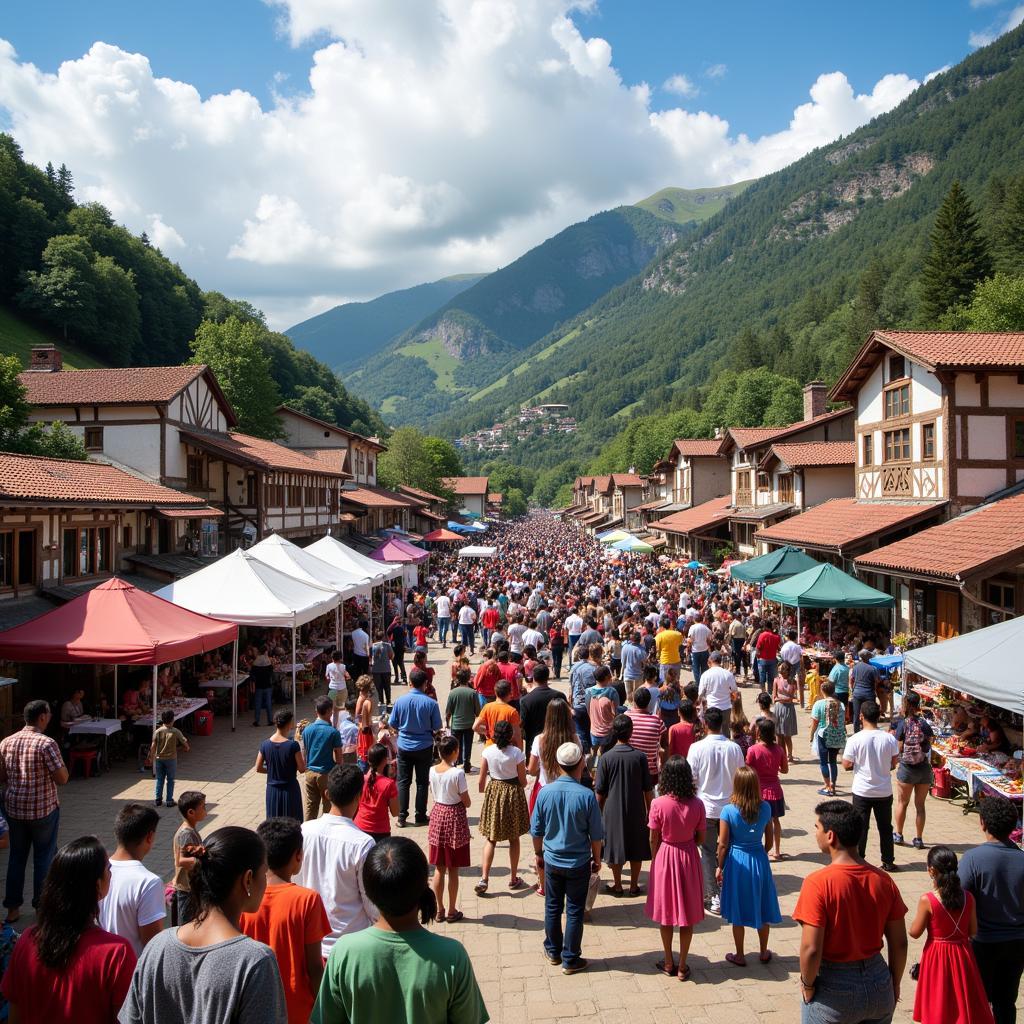Hillside societies are often characterized by their unique challenges and opportunities, shaped by the very environment they inhabit. These communities, nestled amidst slopes and valleys, often develop strong bonds of resilience and community spirit, drawing strength from the landscape that surrounds them. But what exactly defines a Hillside Society, and what can we learn from their experiences?
The Topography of Trust: Building Community on the Slopes
Living on a hillside often necessitates a different approach to life. The terrain can be unforgiving, requiring ingenuity and collaboration to overcome obstacles. Building a home on a slope might involve innovative architectural designs and shared resources, while cultivating crops might mean terracing the land and working collectively to manage water resources. These shared challenges often foster a deep sense of interdependence among residents, leading to a strong sense of community.
Furthermore, the relative isolation of some hillside communities can enhance these bonds. Removed from the hustle and bustle of urban life, residents often rely on each other for support, forging strong social connections that extend beyond mere neighborly acquaintance. This strong sense of community can be a source of strength, resilience, and identity for those living in hillside societies.
Environmental Stewardship: Guardians of the Slopes
Hillside societies often have a deep and intricate relationship with the natural environment. Their livelihoods are often directly tied to the land, with agriculture, forestry, or eco-tourism playing significant roles in their economies. This proximity to nature often fosters a strong sense of environmental stewardship.
Residents of hillside communities witness firsthand the impact of environmental changes, from soil erosion to water scarcity. This lived experience often translates into a deep understanding of the delicate balance that needs to be maintained for the well-being of both the community and the ecosystem it inhabits.
This intimate knowledge of the land often leads to the development of traditional ecological knowledge. Passed down through generations, these practices represent a valuable repository of sustainable living solutions. From water harvesting techniques to indigenous knowledge of local flora and fauna, these time-tested methods offer valuable insights into living in harmony with nature, lessons that are increasingly relevant in our rapidly changing world.
Challenges and Opportunities: Navigating the Ups and Downs
Living on a hillside presents a unique set of challenges. The steep terrain can make infrastructure development, such as roads, schools, and hospitals, more difficult and expensive. Access to essential services can be limited, posing challenges for healthcare, education, and economic opportunities.
 Members of a hillside community gathered for a local event
Members of a hillside community gathered for a local event
However, these challenges also foster innovation and resourcefulness. Hillside communities have a long history of developing ingenious solutions for transportation, water management, and energy production, often drawing on local materials and traditional knowledge. These adaptations not only showcase their resilience but also offer valuable lessons for sustainable living in other parts of the world.
The Future of Hillside Societies: Preserving Heritage, Embracing Change
As the world becomes increasingly urbanized, hillside societies offer a valuable counterpoint. They remind us of the importance of community, the value of environmental stewardship, and the power of human resilience. Preserving the unique cultural heritage of these communities while also ensuring they have access to the opportunities and resources they need to thrive is crucial.
By supporting sustainable development initiatives, promoting eco-tourism, and valuing the traditional knowledge held within these communities, we can help ensure that hillside societies continue to thrive for generations to come. Their stories, etched onto the very slopes they call home, hold valuable lessons for us all.